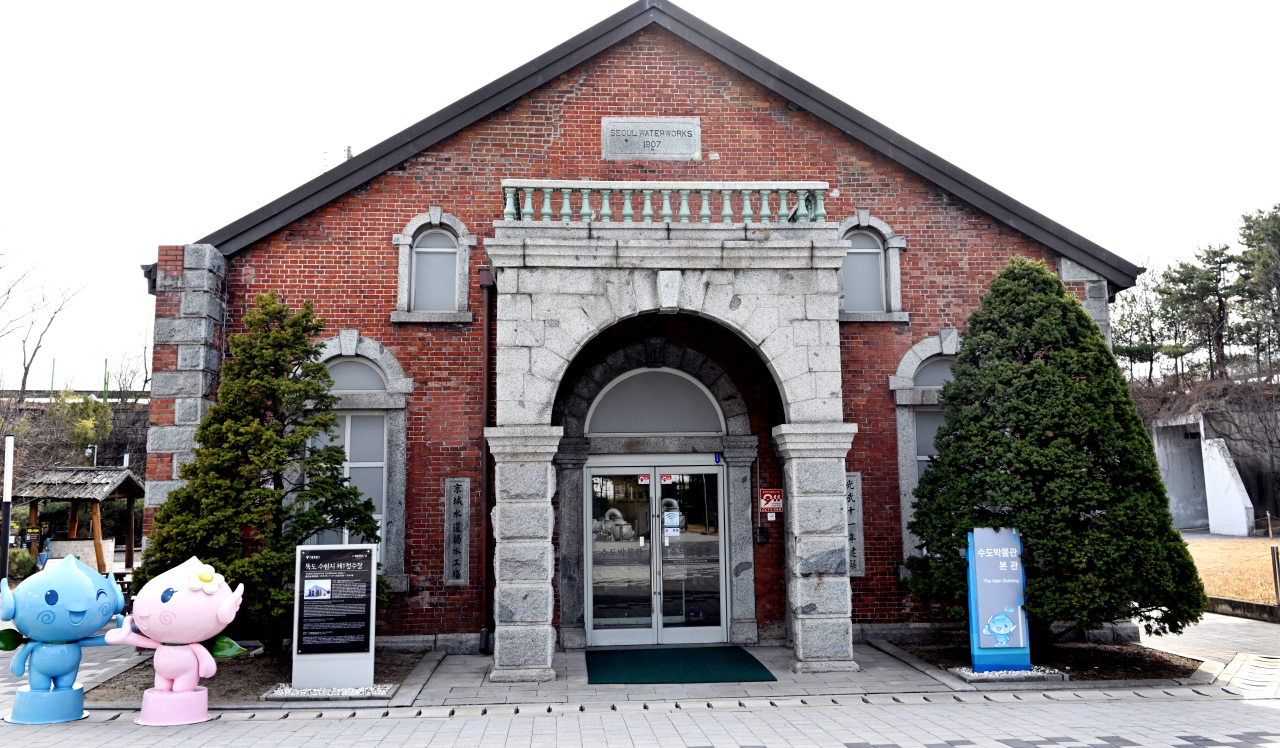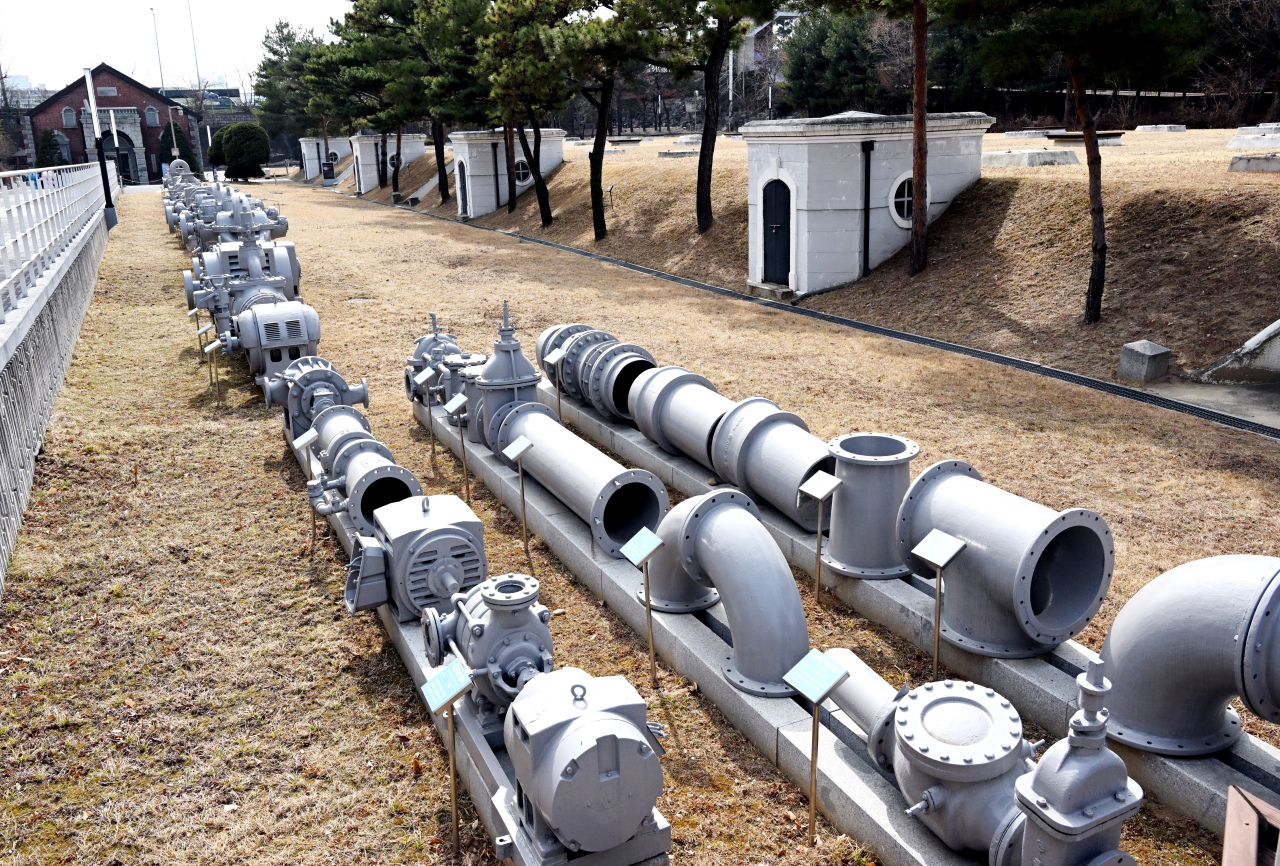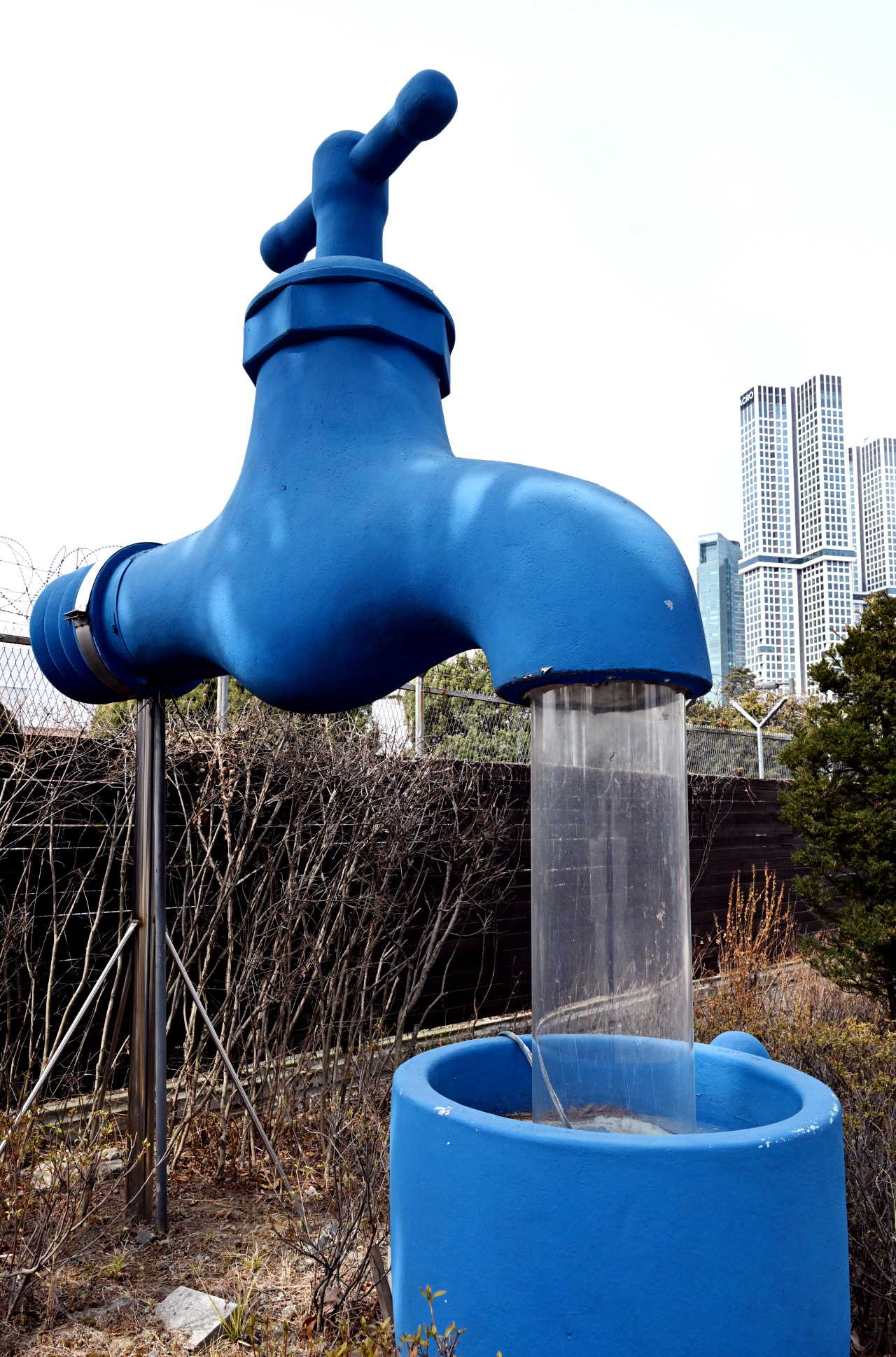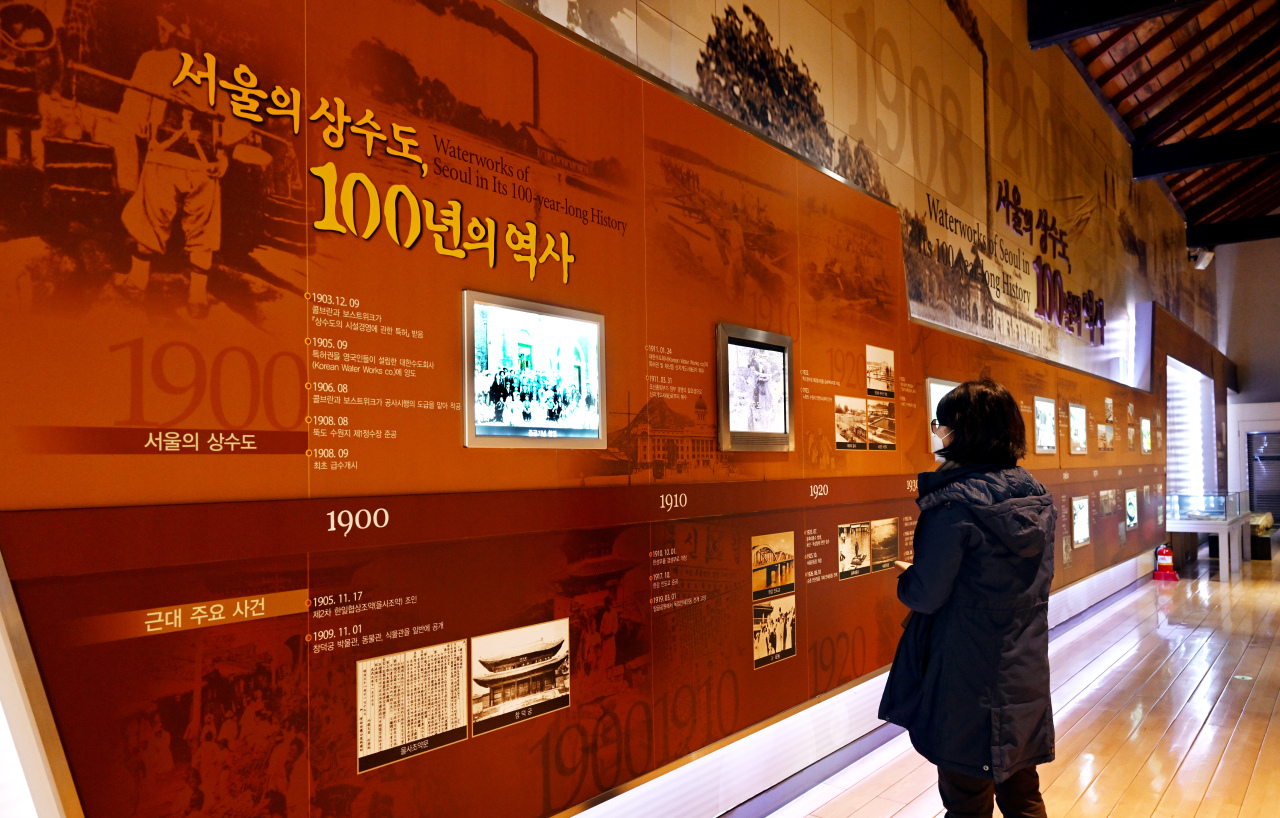 |
Photographed by Park Hyun-koo |
Where water flows, life flourishes, and around a century back, the history of South Korea’s clean water began with Ttukdo Reservoir Water Purification Plant.
 |
Photographed by Park Hyun-koo |
In 1903, two American businessmen, Henry Collbran and Harry Bostwick, were granted the rights to set up the water supply system by Emperor Gojong. The two men were also behind the nation’s first electricity supply. They transferred their patent right to Korea Waterworks Co., which started construction in August 1906.
 |
Photographed by Park Hyun-koo |
Two years later, in August 1908, the nation’s first waterworks facility, which initially went by the name Gyeongseong Water Pumping Plant, was completed at the Ttukdo Reservoir in Seongdong-gu, Seoul, opening the era of modern water supply here. Starting Sept. 1, it began supplying purified water to residents living inside Yongsan and the area surrounded by the four gates of old Seoul. It produced 12,500 metric tons of water to approximately 165,000 Seoul citizens.
 |
Photographed by Park Hyun-koo |
The purification plant, a western-style red-brick mason building, and the slow sand filtration basin were designated as the No. 72 Tangible Cultural Asset of Seoul in 1989.
A part of the site has been turned into a more advanced water purification facility, the Ttukdo Arisu Purification Center. With a capacity to produce 750,000 tons of water, it supplies 400,000 tons per day on average to approximately 1.16 million citizens in Seoul.
 |
Photographed by Park Hyun-koo |
Another part of the site was used to build the Waterworks Museum. Inside the main and annex buildings, exhibitions show the stories and artifacts from the centurylong history of the water supply system, and also how the related culture and technology had developed with it.
In the area outside, visitors can experience how facilities, such as pumps and pipes, had been operated back when the plant was first established. An environmental exhibition introduces the importance of clean water in our lives and the danger of water shortage and contamination.
Photos by Park Hyun-koo
Written by Choi Ji-won
By Choi Ji-won (
jwc@heraldcorp.com)












